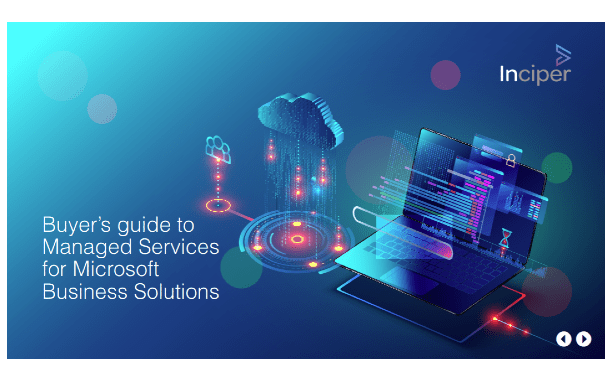There are many reasons that you may decide that it is time to find a Microsoft support partner that suits your organisation better. Whatever the reason, in this blog, we will focus on the switching process and how to go about it.
This blog is not about the contractual negotiations around exiting your current Microsoft support partner - instead, we will look at the things that you need to remember to cover as you exit.
Find a new provider
Whatever the reason for your decision to look for a new Microsoft support partner, the first step is to find an organisation that fits the bill. Read our blog 'What should I look for in a Microsoft Dynamics Partner', to find out some of the key factors to consider.
Assuming you have now found a partner organisation that has the capability, size and culture that meet your needs, what are the next steps?
Download our Buyer’s Guide to Managed Services to learn the 5 key factors you should consider when choosing a Microsoft support partner:
Outstanding cases
Let’s say you have ten support cases open on the day that you transfer between service desks – will the old Microsoft support partner complete the work on them, or do you want the new partner to pick them up from this point?
The best idea is to try and get as many cases closed as possible in advance of the transfer as this makes for a far better experience for everyone. However, you may be leaving your previous provider because they are unresponsive or don’t have the capability. In this scenario, you may need to bring the cases across on the first day – you should include them in the Knowledge Transfer, including as much detail as you can possibly get from the discussions that have already happened.
Knowledge transfer
As well as existing cases, it’s important that the incoming provider knows as much as possible about the situation into which they are arriving. Below are some suggested topic areas to organise the discussions, some of which will require input from the outgoing partner:
Personnel
People are what make life interesting – rarely more so than on a support desk when conversations can often be urgent and fraught. Spend some time ensuring your new Microsoft support partner understands the stakeholders involved. This will enable them to avoid early pitfalls of contacting the wrong person or missing someone off a vital email.
Scope
You need to go through your system with the support consultants to ensure they understand which modules you are using and when you are using them. This gives an overall grounding in your organisation and lets your new Microsoft support partner understand which parts of the system need their attention. It is also an opportunity to showcase how you are using the product – every implementation is unique. The small differences in how you have configured your Dynamics system will make all the difference when trying to track down an issue.
Customisations
You will need to ask your existing provider for a list of all your customisations in the system – this is where a developer was involved in changing the code base. Any new support partner needs to have an exact knowledge of the changes that have been made, the modules impacted and the business reason behind the change.
Integrations
Likewise, for any integrations to external systems, the integration needs to be handed over with full documentation of the associated changes in D365, the agreed integration architecture and the 3rd party details. Integrations are frequently a source of support cases, so it’s important that this is a comprehensive handover.
System access
This sounds obvious but in our experience, it is often the part that can take a long time and hamper the uptake of support with the new partner – the support consultants need to be given access to the appropriate Dynamics systems so that they can start to help. The good practice guidelines for this are that each account should be for a named person, rather than a generic ‘support’ account.
3rd party relationships
Most Dynamics implementations will involve at least one other third party provider or ISV (Independent Software Vendor). As issues may come up in this area, the new Microsoft support partner will need to be able to make contact with the ISV to log and discuss cases on your behalf. You will need to contact the 3rd party to let them know that there will be a change of support partner, so that they will take calls from your new provider.
Microsoft relationship
Microsoft have a concept of ‘partner of record’ which allows your support provider to raise a ticket on your behalf through official channels. You will need to inform Microsoft of the change of partner; the process for doing this varies from product-to-product and depends on the licencing model used, however your new managed services partner will be able to guide you through this process.
Switching your Microsoft support partner may appear to be a complex process, but ensuring you have a partner organisation that has the capability, size and culture to meet your needs is essential to delivering the most value from your Dynamics solution.



